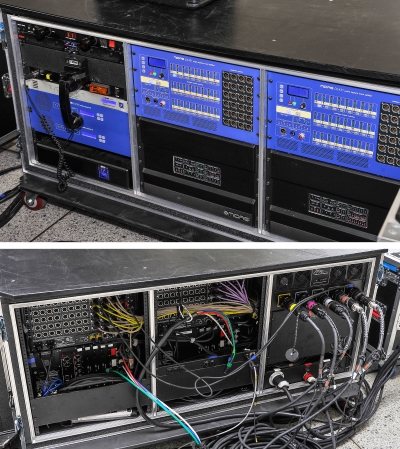Over the course of the 30 years since the release of her first album, Alison Krauss has logged plenty of time with Union Station as well as collaborators ranging from the Cox Family bluegrass band to Robert Plant. Following on the heels of the February 2017 release of Windy City, her first solo record since 1999, she hit the road this past fall, co-headlining on tour with David Gray.
Perhaps best described this time out as striking a mindful balance onstage between the bluegrass she grew up playing as a fiddle prodigy and the smooth, undulating pop sensibilities of someone like Norah Jones, Krauss’ sound was equally imbued with eclectic country overtones, and not as much of the foggy-bottom mountain folk music she is often associated with.
“This was my first time out with Alison,” relates the tour’s front of house engineer Gordon Reddy, “and oddly enough, when I got the call I was on tour with Norah Jones. As I was crossing off the dates, the whole time I kept saying to myself, ‘I hope I can find myself another nice gig like this one.’ Then suddenly the phone rang one day, and I was ecstatic.”

Reddy climbed aboard at production rehearsals with monitor maven Michael Larcey, whose own sound company, Cleveland-based ML Sound Design, provided a turnkey custom audio control package based around a pair of Midas PRO X consoles installed both in the house and onstage.
“We carried everything we needed with the exception of stacks and racks,” Larcey tells me shortly after the tour came to a close in late October. “That kept us light and lean, reduced our carbon footprint, and ensured we could reliably obtain repeatable results. Gordon was really awesome at PA du jour at each stop, we were definitely lucky having him out front.”
Clean & Efficient
Stripped-down and spare by design, Reddy and Larcey were the tour’s two-man backbone behind basically every event in their respective worlds. Joined at the hip with the tour’s PRO X consoles were Midas DL431 card-based input splitters, a choice made to accommodate the reasonable amount of channels coming from the stage as well as to eliminate the need for gain sharing and the like.
“The nice thing about the DL431s is that there is an A side and a B side within the independent preamps inside,” explains Larcey. “So Gordon took one side and I took the other, and while it’s a 24-channel box, we had 48 preamps in there, which we split down the middle at 24 apiece. We put two of these boxes in our system, giving us 48 channels and 96 preamp channels. This move made the rack-pack efficient, and most importantly, kept the signal chain exceptionally clean, because we weren’t forced to split our audio through multiple boxes.”

In addition to Krauss, musicians onstage included the Cox Family’s Sidney and Suzanne Cox, as well as Ron Block (guitar/banjo), and Barry Bales (bass) from Union Station. Vocal mics across the board were Shure KSM9HS hardwired units. Four or five other microphones were auditioned for the role during rehearsals, but after all was said and done, the KSM9HS – a long-standing live sound favorite of the artist – remained at the top.
“What I really noticed, and Gordon pointed this out too, was the lack of distortion with the KSM9,” Larcey notes. “When compared to a [SM] 58 – which is a great mic, don’t get me wrong – you don’t have any sense of harmonic distortion. That’s great for certain artists, but with an ethereal voice like Alison’s, it wasn’t what we were after. After all, we went through great lengths with the sound of the preamps and clarity of short patch cables to keep everything clean, simple, and extremely transparent. In the end, the difference between a 58 and our KSM9s was astounding in the band’s in-ears, and even in the nearfield monitors we used during rehearsals in Nashville.”
When it came to in-ear monitoring, Larcey reported that “the band guys had what they brought themselves and that was fine, but Suzanne, Sid, Alison, and I were all on SE846 earphones, some of the higher-end offerings from Shure. No special molds or anything, just generic right out-of-the-box. They were a nice complement to our mics and the system as a whole.”














